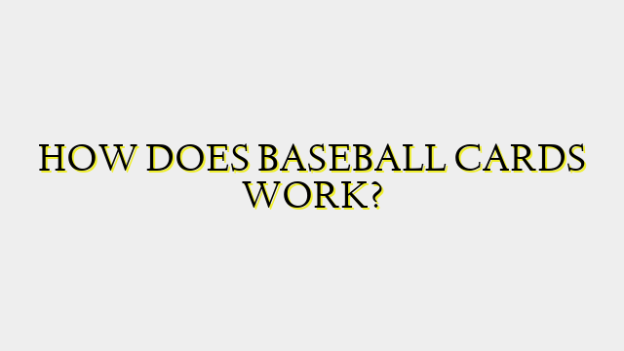Baseball cards are printed on thin pieces of cardboard or sturdy paper that feature images of baseball players, managers, coaches or other figures from the sport on the front, along with statistics, biographical information and other details on the back. The first baseball cards date back to the late 1800s when cigarette and tobacco companies began including them in their products as a marketing tactic. This helped promote both their brands and baseball. Over time, the cards evolved and became collected and traded by fans.
In the modern era, baseball cards are primarily produced by major card companies like Topps, Panini and Leaf. These companies purchase licenses from MLB, the MLB Players Association and individual teams to legally use their logos, images and player likenesses on cards. Each year, companies release new annual sets near the start of the baseball season in late winter/early spring that feature the current season’s rosters of players for each MLB franchise.
Some of the key elements on a baseball card include: the front image of the player in uniform, their name, team logo/abbreviation and statistics from the previous season like batting average, home runs and RBI. The back of the card lists additional stats, biographical information, career highlights and accomplishments. Card designs vary each year but always prominently display photography and graphics recognizing that player and season.
After being printed, cards are packaged by the manufacturer in wax packs, boxes, tins or other sealed containers containing a random assortment of several cards. These products are then distributed nationally to hobby shops, mass retailers, drug stores and other outlets where people can purchase them. The average wax pack contains approximately 5 cards while boxes have anywhere from 12 to two dozen packs inside.
Once ripped open by collectors, the cards inside can be organized and stored in various binders, sheets, boxes and other holders. The primary way cards were traditionally collected was to try and “complete the full set” by obtaining one of each player and substitute card included that year. Many also focus on specific player collections, team sets or chase rare and unique parallels, inserts and memorabilia cards inserted randomly in packs.
Two of the most coveted ways to collect are to obtain autographs or memorabilia relic cards featuring game-used pieces of uniforms, bats or other memorabilia embedded inside the card. These types of “hits” hold immense value since each autographed or memorabilia card is one-of-a-kind. Numbering is also used on parallels, inserts and short-print cards to indicate rarity—lower numbers signifying a more scarce version of that card.
The collecting and reselling of baseball cards is a multi-billion dollar industry. While wax packs are inexpensive, complete common sets from recent years typically sell in mint condition for $50-$100 depending on the size and crop of rookies. Rare and valuable vintage cards or modern autographed/relic cards can fetch thousands or sometimes hundreds of thousands of dollars at auction. Condition and centering also greatly affects the value—with near perfect “gem mint” grades exponentially boosting a card’s worth.
Online trading via platforms like eBay opened up an entirely new approach to collecting and selling cards. Now, individual cards can be bought, sold and swapped between collectors across the world with ease.Card collecting remains immensely popular for fans of all ages, serving as an educational and fun way to follow the sport while trying to obtain their favorite players through hitting big in packs or trading up their duplicates. This living history of baseball housed in cardboard continues to thrive generation after generation.




